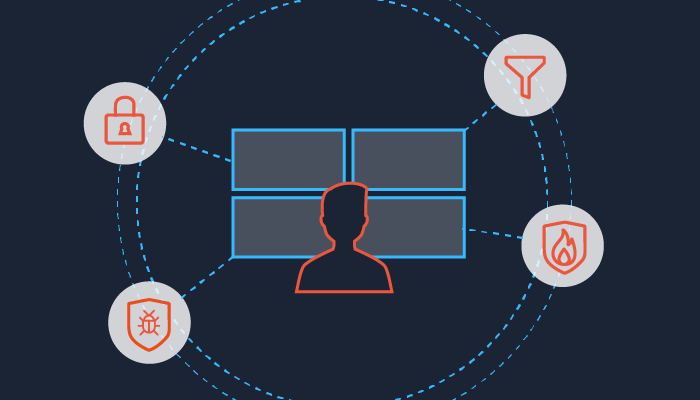15
+
YEARS OF
EXPERIENCE
1000
+
SUCCESSFUL
Projects
80
+
Satisfied
Clients

Implementing a Security Operations Center (SOC) is a critical step for organizations aiming to strengthen their cybersecurity posture in an increasingly complex threat landscape. A well-executed SOC enables continuous monitoring, threat intelligence integration, and efficient incident response to mitigate risks swiftly. In this post, we explore SOC implementation best practices that drive operational excellence and resilience. Whether you are launching a SOC from scratch or optimizing an existing one, these proven guidelines provide a roadmap for lasting security success.
Foundations of SOC Implementation Best Practices
Establishing a accomplished Security Operations Center starts with clearly defined objectives aligned to your association’s risk appetite and compliance requirements. The foundation rests on deploying a robust infrastructure composed of next-generation Security Information and Event Management (SIEM) tools, threat intelligence platforms, and advanced analytics. Integrating automation and orchestration capabilities enhances alert triage and streamlines incident response. Equally important is assembling a multidisciplinary team comprising skilled analysts, threat hunters, and incident responders committed to continuous enhancement.
Additionally, developing extensive policies and procedures tailored to the company’s unique environment is vital. These guidelines ensure consistent operations, clarify roles and responsibilities, and set expectations for security event handling. Regular training and scenario-based exercises further enhance team readiness and response agility. Implementing SOC metrics and key performance indicators (KPIs) enables leadership to measure effectiveness and identify areas for refinement. When these foundational elements are implemented thoughtfully, they pave the way for a resilient and adaptive SOC environment.







Advanced Strategies in SOC Implementation: A Practical Guide
- Leverage AI and ML for Proactive Detection:
Integrate Artificial Intelligence and Machine Learning into SOC analysis tools to enable predictive analytics, early threat detection, and reduced false positives. These technologies help identify abnormal behavior patterns before they escalate into serious incidents.
- Strengthen Communication Across Departments:
Establish open communication channels between SOC teams, IT operations, and business stakeholders. This fosters a collaborative security culture and ensures that priorities align across the organization.
- Implement Executive Reporting & Compliance Transparency:
Regularly update leadership, compliance officers, and governance teams on threat trends, incident responses, and KPIs. Clear reporting boosts visibility and supports strategic decision-making.
- Adopt Centralized Security Platforms:
Combat alert fatigue and tool sprawl by consolidating security tools into a unified SOC platform. Automation of repetitive tasks boosts analyst efficiency and reduces response time.
- Use Threat Intelligence Feeds:
Incorporate external threat intelligence from trusted industry and government sources. This contextual data strengthens situational awareness and supports proactive, sector-specific defense strategies.
- Balance Automation with Human Expertise:
While automation streamlines operations, human judgment remains critical for contextual analysis and decision-making. A hybrid approach ensures accuracy and adaptability.
Cloud Technologies offers tailored SOC implementation solutions that help businesses navigate these complexities, improving detection capabilities, operational efficiency, and overall security posture.

Organizations adopting these advanced SOC practices often see improved detection accuracy and faster containment of incidents. emphasizing continuous learning and leveraging external intelligence sources enables SOC teams to evolve alongside cyber threats proactively. These approaches substantially reduce operational burdens and enhance overall cybersecurity resilience.
Real-World Applications of SOC Implementation Best Practices
Practical submission of SOC implementation best practices is best illustrated through case studies where organizations have successfully enhanced their security operations. for example, a multinational financial services firm partnered with Cloud Technologies to build an in-house SOC that leveraged hybrid cloud infrastructure and AI-driven analytics. This approach reduced their average incident response time by 40%, while simultaneously improving threat detection precision through automated correlation of disparate data sources.
Another pertinent example includes a healthcare provider that integrated compliance-driven monitoring and established strong cross-functional collaboration between cybersecurity and clinical IT teams. The SOC implementation helped them navigate regulatory audits more confidently and minimize exposure to ransomware attacks through timely threat identification and containment.
These real-world cases highlight the importance of tailored solutions and dynamic SOC models that adapt to industry-specific challenges. They affirm that continuous assessment, stakeholder engagement, and technology optimization are key drivers for SOC success. By learning from such examples, organizations can better structure their own SOC initiatives to maximize operational impact. At Cloud Technologies, we work closely with clients to replicate proven tactics and innovate where necessary to meet evolving cyber defense demands.

answer time
satisfaction
score
on initial call
same business
day
Taking Your SOC Implementation to the Next Level
Effective SOC implementation is an ongoing journey rather than a one-time project. organizations must continuously evolve their SOC capabilities by adopting new technologies, refining processes, and cultivating talent. Measuring performance using quantitative metrics, such as Mean Time to Detect (MTTD) and Mean Time to Respond (MTTR), helps identify performance gaps and prioritize improvements. Building partnerships with managed security service providers or leveraging hybrid SOC models can supplement internal capabilities, especially where resourcing is constrained.
At Cloud Technologies, we emphasize a proactive approach to SOC enhancement by embedding threat hunting initiatives, leveraging global threat intelligence sharing networks, and promoting automation without sacrificing analytical expertise. Our clients benefit from tailored roadmap planning that aligns with business strategy, compliance frameworks, and emerging cyber threats. If you are ready to transform your organization’s cybersecurity operations and build a resilient Security Operations Center, we invite you to connect with us contact us to explore how TechCloud IT Services L.L.C can definitely help realize your SOC goals with proven best practices and expert guidance.


